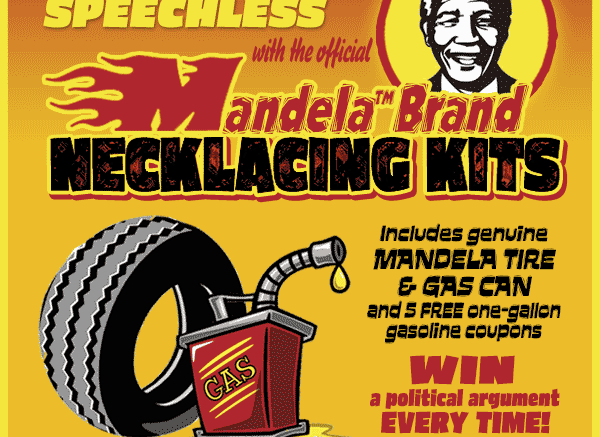DEATH OF AN ICON
Exclusive: Les Kinsolving found just 1 obituary mentioning leader’s Communist ties
When translated, that classic Latin maxim “De mortuis nil nisi bonum” is as follows:
“Of the dead, say nothing but good.”
While I would never compare the just-deceased Nelson Mandela to any of these three, the Mandela obituaries seem so profuse in praise and virtually absent in critique.
One exception was the Washington Times, whose Mandela obit noted the following:
“As a young man, he was influenced by left-wing, anti-colonial figures such as Karl Marx, Fidel Castro and India’s Jawaharlal Nehru. He was a prominent member of the African National Congress, which originally adopted a policy of passive resistance against apartheid, but later embraced violence against the military and white civilian targets.
“Mr. Mandela and 150 other opponents of apartheid were arrested in 1956 on charges of treason in a trial that lasted nearly five years. All defendants were acquitted in 1961, but by that time Mr. Mandela was on the road to violent resistance against the white regime.
“After the trial, Mr. Mandela and the South African Communist Party formed the armed wing of the ANC called Umkhonto we Sizwe, or Spear of the Nation, and coordinated sabotage campaigns against military and government targets. He also planned for guerrilla war against the regime if the sabotage failed to end apartheid.
“Authorities arrested Mr. Mandela again in 1962 on charges of organizing labor strikes and attempting to leave the country illegally. He was sentenced to five years in prison and tried a third time in 1963 for sabotage and charges similar to treason.”
The Times columnist, Michael Taube, also noted:
“Mr. Mandela was sympathetic to communism for many years. He studied the works of Karl Marx, Vladimir Lenin and Mao Zedong – and agreed with many of their ideas. He counted two schoolmates, South African Communist Party leader Joe Slovo and his wife, Ruth First, among his friends and associates. Moreover, in Stephen Ellis’ 2012 book, ‘External Mission: The ANC in Exile, 1960-1990,’ the Desmond Tutu social sciences professor at Free University Amsterdam unearthed documents revealing that Mr. Mandela may have been, contrary to his long-standing denial, a South African Communist Party member.”
The Times also reported that Mandela was released from prison on Feb. 11, 1990. “In his personal life, Mr. Mandela was plagued by an adulterous wife, Winnie Mandela, who was later convicted of kidnapping and assault. They separated in 1992.”
Did any Mandela obit writers ever mention the word “necklacing”?
Wikipedia, the free online encyclopedia, has the following under the word “necklacing”:
“Necklacing is the practice of summary execution and torture carried out by forcing a rubber tire, filled with petrol, around the victim’s chest and arms and setting it on fire. The victim may take up to 20 minutes to die, suffering severe burns in the process.
“The practice became a common method of lynching among black South Africans during disturbances in South Africa in the 1980s and ’90s. The first recorded instance took place on 23 March 1985 when black African National Congress (ANC) supporters killed a black councilor who was accused of being a white collaborator.
“Necklacing ‘sentences’ were sometimes handed down against alleged criminals by ‘people’s courts’ established in black townships as a means of enforcing their own judicial system. Necklacing was also used by the black community to punish members of the black community who were perceived as collaborators with the apartheid government. These included black policemen, town councilors and others, as well as their relatives and associates. The practice was often carried out in the name of the ANC. Winnie Mandela, then-wife of the imprisoned Nelson Mandela and a senior member of the ANC, even made statements that endorsed its use.”
I am unaware of any reports that after his release from prison, Nelson Mandela made any statement in disagreement with Winnie Mandela’s endorsement of necklacing, even though later he divorced her and remarried.
Author Lynda Schuster wrote: “Necklacing’ represented the worst of the excesses committed in the name of the uprising. This was a particularly gruesome form of mob justice, reserved for those thought to be government collaborators, informers and black policemen.”
Within hours of Mandela’s passing, WND editor and CEO Joseph Farah wrote in a column titled,“Don’t mourn for Mandela,” that:
“The world has been sold a bill of goods about Mandela. He wasn’t the saintly character portrayed by Morgan Freeman. He wasn’t somebody fighting for racial equality. He was the leader of a violent, Communist revolution that has nearly succeeded in all of its grisly horror.”
http://www.wnd.com/2013/12/mandela-and-necklacing/

